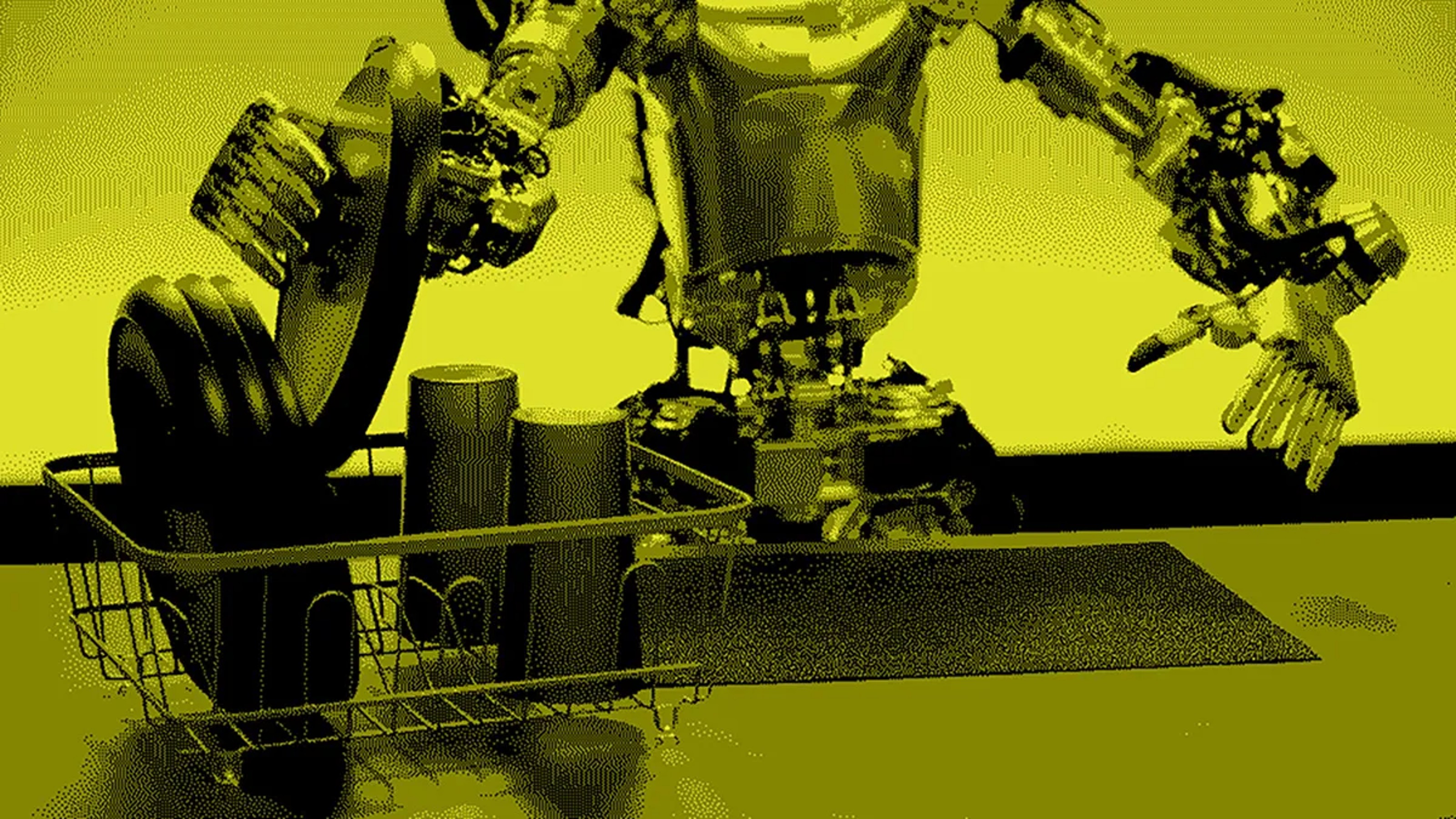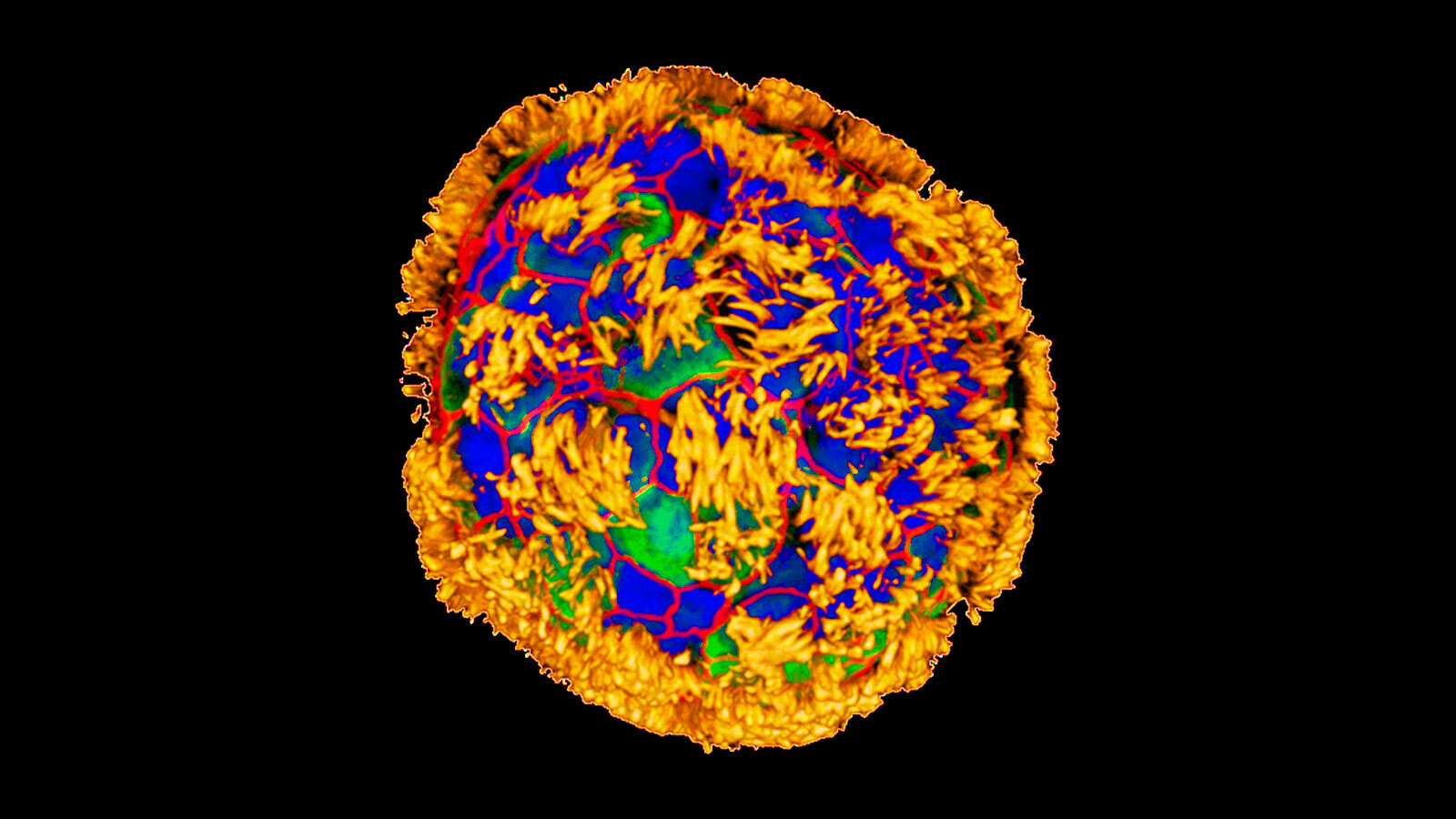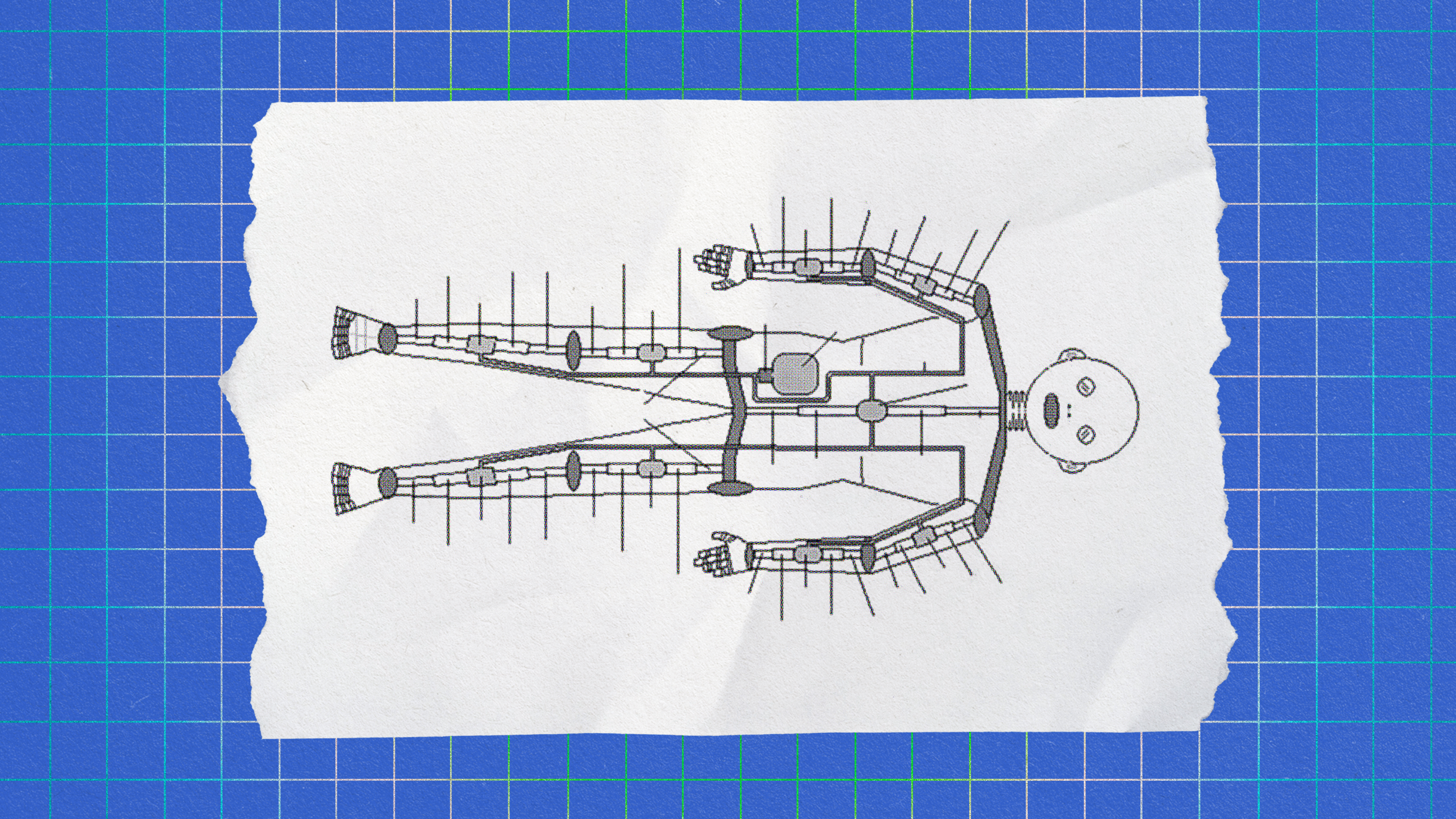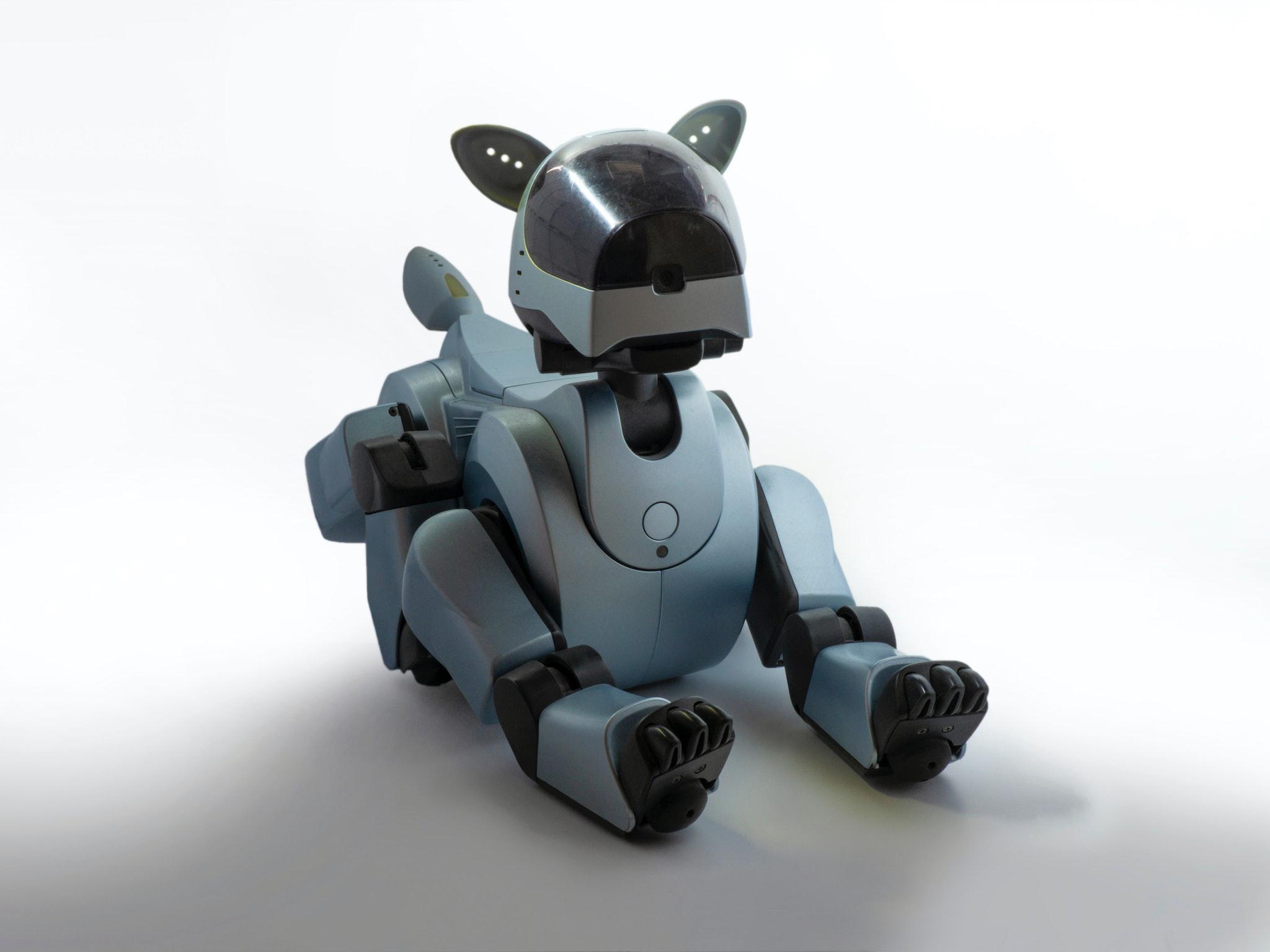Revolutionary biohybrid robots are coming. Are we prepared?

- Biohybrid robots combine living and synthetic materials, taking the forms of limbs and organs or even entire living organisms.
- Philosophically, biohybrid robots make plain something that many scientists and thinkers have suspected. Humans, and other living creatures, are just machines, albeit with organic rather than inorganic parts.
- With lessons from biohybrid robotics, scientists could one day build a complex, living being from scratch.
In 2014, researchers at the University of Illinois created a microscopic swimming robot. This accomplishment alone might not have attracted much attention. But what set it apart was how they constructed their creation: with cardiac muscle cells derived from rats. This was one of the very first “biohybrid robots.”
With perceptions shaped by decades of science fiction, the general public has long viewed robots as nonbiological entities. Their bones are metal, their hearts are batteries, and their muscles are motors, pistons, and gears. They might be enveloped in real-looking synthetic skin, but this is merely a cloak for their inorganic interiors.
Now, scientific advances have increasingly shown that biological beings aren’t just born; they can be built. Two years after the biohybrid swimmers, researchers at Harvard scaled up the idea to make the first biohybrid “animal” — a 16-millimeter-long ray. With a body of elastomer, a skeleton of gold, and muscles made of rat cells, the critter glided through the water at a meandering yet meaningful pace, steered and powered by light.
More recently, a team made a small biohybrid robot that walks with a human gait. Another constructed a robotic hand that can sense with built-in biological neural networks.
As creatures and machines meld together in increasingly advanced forms, ethicists are starting to take note. Dr. Rafael Mestre from the University of Southampton, who specializes in emergent technologies, recently teamed up with colleagues from around the world to ponder the ethical ramifications of biohybrid robots.
Biohybrid bots
Essentially, biohybrid robots combine living and synthetic materials. They might have muscle cells as actuators, neurons as motor controllers, and sensory cells as tactile sensors, for example. Some even build upon living organisms themselves. Biohybrid robots take advantage of living systems’ millions of years of evolution to grant robots benefits such as self-healing, greater adaptability, and superior sensor resolution.
But are we ready for a brave new world where blending the artificial and the biological blurs the line between life and non-life? That’s one ethical concern that Mestre and his co-authors probe with a hypothetical scenario. Imagine a future, they write, where “biohybrid systems have evolved to create full-sized robots that can interact with humans and perform complex actions in a very organic manner, assisted by muscular tissue and neuromuscular junctions. Every year, they become more complex, and different types of tissues are added into the mix… As their complexity increases, people wonder whether they feel pain and are sentient, and how they should interact with them.”
Among these hypothetical bio-bots, where is the point where they are more of a living being rather than a machine? Early versions might start with just a few biological parts but eventually get “upgraded” to contain more tissue than metal as non-living systems are swapped out for living ones. Will they require a living brain to merit our empathy?
Granted, this scenario is currently still within the realm of science fiction. But there’s another that’s getting closer to reality. The researchers foresee human-computer interfaces “enabling the control of artificial limbs using existing nervous tissue.”
Biohybrid robotic arms, employing “actual and adaptable muscles” extracted from living animals, could arrive in the near future. Biohybrid organs might also become available. Moreover, these limbs and organs could very well exceed the capabilities of our own. Patients in dire need of transplants and prosthetics would likely hail such advances, but the high costs of cutting-edge tech could limit its availability to the wealthy.
The biohybrid future
Dr. Arthur Caplan, the Drs. William F. and Virginia Connolly Mitty Professor of Bioethics and founding head of the Division of Medical Ethics at NYU Grossman School of Medicine’s Department of Population Health in New York City, agreed that cost and access could be a key ethical issue with futuristic biohybrid limbs and organs, as it is with any significant medical advance.
“I think that’s a core justice issue — better to address it now,” he told Big Think in an interview. “This is complicated technology; it’s certainly going to start out pricey. I doubt it will be available anywhere except rich countries. And within the rich countries, there’s a pretty good chance it will go first to the better off.”
Caplan suggests that researchers studying advanced biohybrid robotics could make provisions to ensure diverse access to the technology.
“For example, that may influence who you pick to study this,” he said. “You want to have a rich and varied subject pool, so if the technology works, you haven’t just tested it on 40-year-old wealthy white men,” he said.
Caplan identified other thorny ethical issues with researching biohybrid limbs and organs. For one, teams testing the technology on people should perform their interventions at top-of-the-line transplant centers and ensure subjects are properly informed of the risks, which might include death.
Second, those researchers need to have a plan for what happens if the biohybrid limb or organ fails. “If patients get one of these stuck inside them, then what? Is this what we call a ‘bridge to nowhere’?” Caplan said.
Third, Caplan noted that it’s a legitimate question whether the pursuit of biohybrid organs is a worthwhile use of limited research resources.
“There are obviously a lot of people who might benefit from a bioartificial organ, whether it’s a kidney replacement, muscle replacement, or connectivity replacement. But it’s going to take a while to get there and make sure that it functions with some sustainability and durability. That’s a pretty big research endeavor.”
So, the question becomes: Would those resources spent on biohybrid robotics be better off used to mitigate the problems that might cause people to need them, such as diabetes and obesity? Is it wiser to prevent the malady via tried and tested interventions rather than focus on a far-off, flashy cure?
Caplan stressed that research into biohybrid organs is still very much in the preliminary stages. In the past, there’s been lots of focus on creating synthetic kidneys. These take the form of kidney cells housed in implantable bioreactors.
Philosophically, biohybrid robots make plain something that many scientists and thinkers have suspected: Humans and other living creatures really are machines, in a relevant sense, albeit with organic rather than inorganic parts.
“Biohybrid robots serve as a platform for understanding life itself,” Mestre and his co-authors wrote. “Developing components for these robots, such as muscle actuators, neuronal circuits as sensors, or neuro-muscular junctions to form intelligent robots, requires a deeper exploration of cells and their behavior beyond traditional Petri dish platforms. Each biohybrid robot emerges into a ‘being’ mimicking ‘development in vitro.'”
With lessons from biohybrid robotics, scientists could one day even build a complex, living being from scratch. But to make breakthrough biohybrid robots a success story rather than a tragedy, the time to consider the ramifications is now. Mestre and his team recommended we get prepared.





